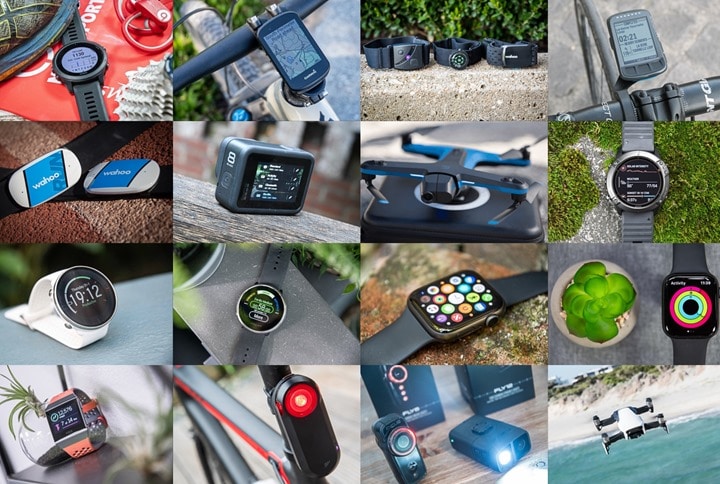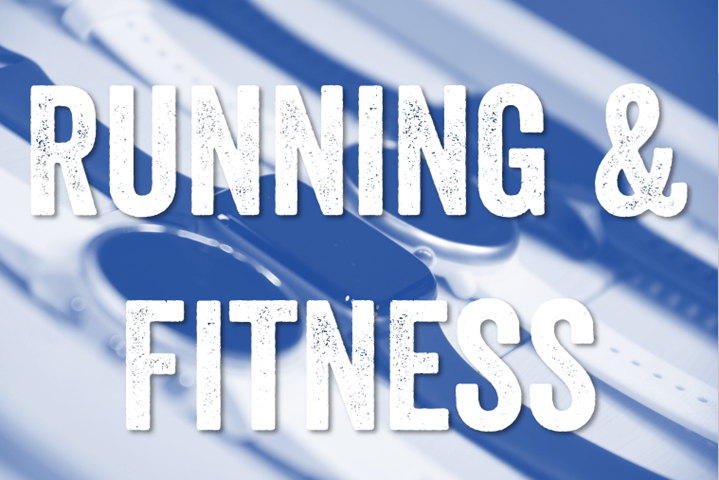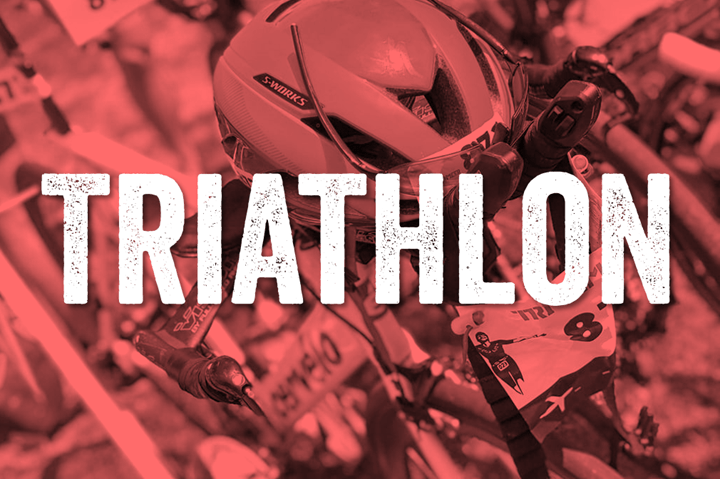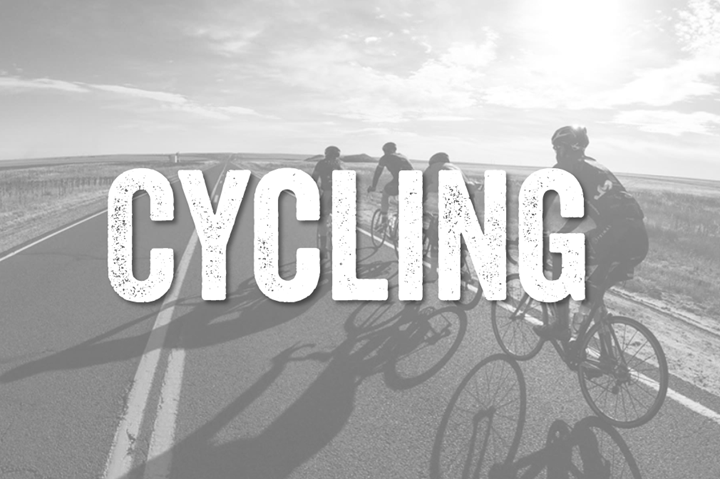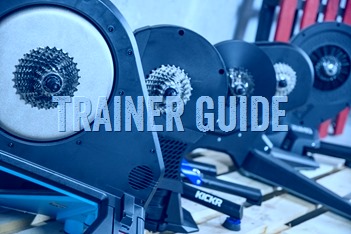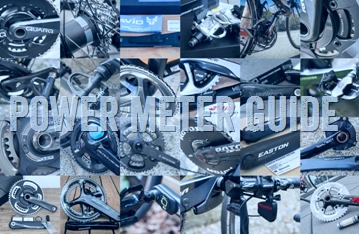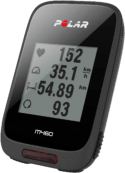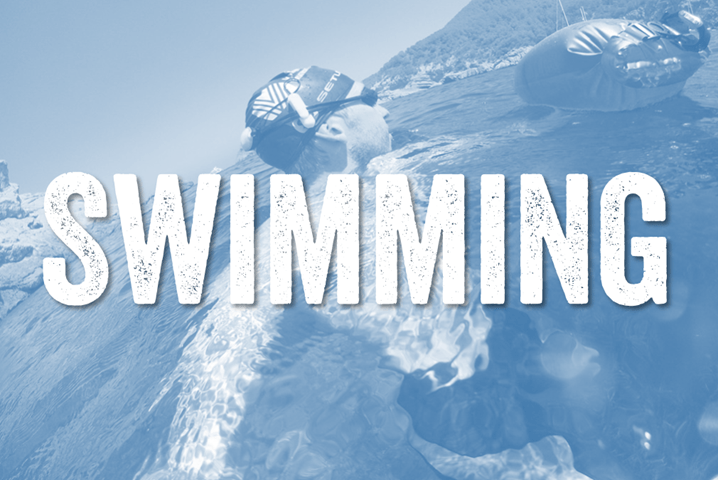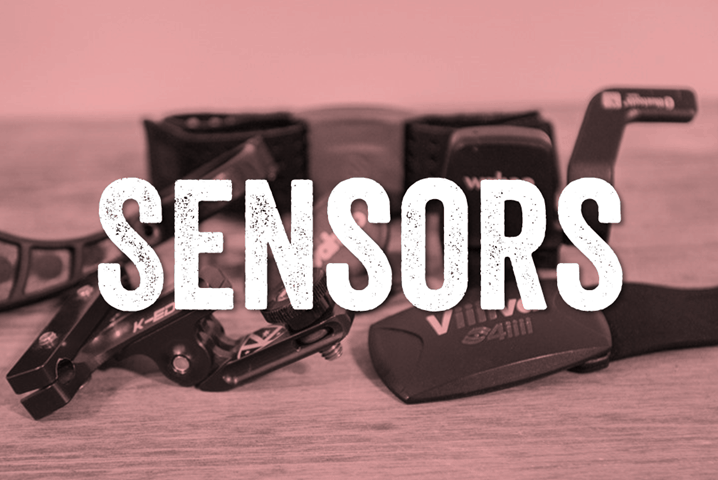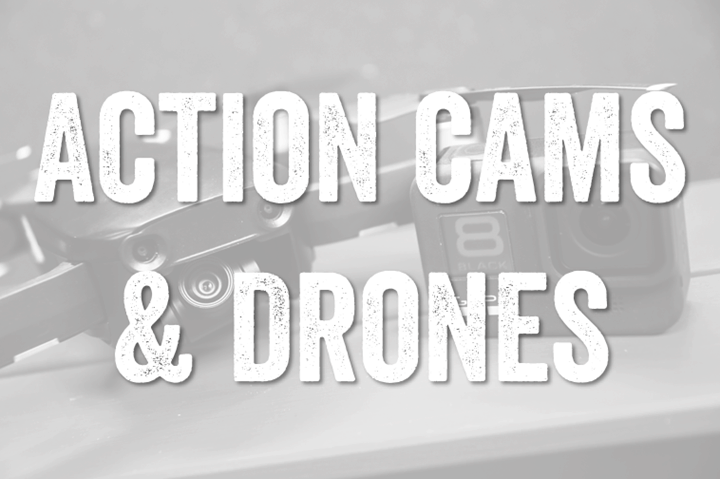Each year around this time I publish my complete guide of sports tech recommendations, covering a wide range of sport gadget areas. My goal here being to give my specific recommendations – exactly the same recommendations I’d give to my own friends and family. This post isn’t here to list every option on the market in an effort to make every manufacturer happy. Of course, as more and more companies get into the market, there ends up being more and more possible scenarios as the products expand in functionality.
Inversely – we’ve also seen cases where the strong get stronger, while others struggle to keep up. It’s not all about features of course, reliability and accuracy, as well as ease of use are a key aspect. Still, there’s a reality when one company in the industry (Garmin) sells many millions more sport-focused devices than all but the largest of international companies (Apple/Fitbit/Samsung/Huawei). It’s because they’re releasing 10-20 fitness/outdoor/sports devices per year, and more people are buying them than ever before. Sometimes they whiff, but most times, they don’t.
One could try and write recommendations for every possible edge case, but realistically I think there’s probably already too many categories below as it is. Plus, that’s what the comments section is for. I try as best as possible to answer all those quirky edge-case questions.
Oh – wait, if you’re new around here note that I don’t take any money/sponsorships/whatever from any of the companies in this post. Or from any company I review for that matter. So if I like a device, it’s because it’s a legit good device I want to use. With that, let’s dive into it!
GPS Smartwatches:
We saw an absolute boatload of new wearable tech this year. Garmin refreshed their entire lineup from top to bottom, COROS added a bunch, and Fitbit, Apple, and Suunto also added new units. Polar also introduced a new watch, and significantly updated last year’s watches with new firmware.
It’s getting harder and harder to separate through everything. And again, keep in mind that there are still some good watches that don’t make the cut here. In many cases there’s nothing wrong with them. It’s just not what I’m likely to recommend to friends and family, which is how I approach this.
Note, I specifically break-out the triathlon section down below in the next header.
Casual Athlete: Fitbit Ionic, Apple Watch (variants noted below), Polar Ignite, or Garmin Vivoactive 3
Here, let me break down who should get each one. It’s probably easier that way:
Apple Watch: If you’re looking for a watch that’ll track your workouts but won’t obsess over data – while still giving you the best all around smartwatch experience, there’s no question here – it’s the Apple Watch. The tricky part is deciding which one. Series 3 is a steal now at $199 (remember, it has GPS as well as offline music support). Meanwhile, Series 5 is the newest with the always-on display. However, I think in some ways the sweet spot is actually Series 4, given it has better battery life than the Series 5 while still sporting the same larger display (the Series 3 has a smaller display). Apple keeps the software virtually identical on all of them.
Fitbit Ionic: I know, there’s the Fitbit Versa for cheaper. But you’ll have to take your phone along for runs if you want a GPS track. The Ionic you don’t. Sure, it’s two years old – but the power of Fitbit is (or was?) never their hardware. It was their platform and social ecosystem. So if you’ve got friends on Fitbit that you want to compete with (create challenges or such), and if you want a smartwatch that’s smart but doesn’t feel like it’s outsmarting you – then this is a good option. Just find it on sale…and of course, realize that Google just bought Fitbit.
Garmin Vivoactive 3: The Vivoactive series is the most athlete-focused of this bunch. You can download structured workouts to it, pace races, and track all the health/fitness stats you could ever want across virtually every sport (even tracking runs while downhill skiing). Yes, I know – the Vivoactive 4 just came out a few months ago. But I don’t think it justifies the price over the Vivoactive 3 music (when not on sale, on sale for $299 – sure). No matter how many times Garmin tries to convince itself that a $100 price bump over the real-world Vivoactive 3 Music price, I just don’t buy it. So, the Vivoactive 3 Music is still a great little watch that does almost everything the Vivoactive 4 does. If you don’t want music, then simply get the base Vivoactive 3 (sans-music). Now – there’s absolutely nothing wrong with Vivoactive 4. So if that’s more your jam – go forth. Same goes for the Garmin Venu, which is merely a Vivoactive with a far prettier screen for $50 more.
Polar Ignite: While I think the Ignite is very slightly overpriced, I think what the company is doing around dynamically prescribing workouts and recovery/strength/flexibility workouts is super cool. Plus, the watch integrates well into the larger Polar ecosystem, so it doesn’t feel like a budget watch – but like an athletes’ watch.
Data Driven Athlete/Runner: Garmin Forerunner 245/245 Music
Garmin’s latest mid-range Forerunner now encompasses almost all of the higher end stats found on what was last year’s highest-end watches. Of course, as always, there are new higher-end stats in the land – which you’ll find on the FR945/Fenix 6 (I cover those later). But for most people, you’ll find you get everything you could possibly need for running or racing with a Forerunner 245 or 245 Music. PacePro being one of the big new additions this year, which allows you to get dynamic pacing information based on grade and splits. It’s super cool tech, and really one of the highlights of the year from a sports tech standpoint (it’s also on the Fenix 6 and FR945). You’ll also get the newer safety/tracking assistance features as well as more data fields/page layouts than years prior. While the previous FR235 was solidly middle of the pack from a features standpoint, so much has been packed into the FR245 now that it feels more premium than price point suggests.
And while it’s definitely a runner’s watch at heart, it’ll likely appeal to most any athlete. Unless you openwater swim, since it doesn’t do that.
Best in Class Sports/Fitness Watch: Fenix 6 Pro Series
There’s really no competition here. If you’re looking for the most feature-packed higher-end watch, it’s going to be the Garmin Fenix 6 Pro Series. Ok, I guess technically it’s the MARQ Athlete, but I’d prefer to spend that near-$2,000 elsewhere. I just wouldn’t recommend it to friends – perhaps only because I mostly dislike everything about the band.
But the Fenix 6 – that I like. I’d personally recommend the Fenix 6 Pro, since it includes maps and music. I think the Solar edition is probably overkill, but I’m not really a large-watch kinda guy (which also perhaps didn’t help MARQ in my eyes). While I think the potential for solar within the Garmin lineup is super cool, it’s clearly more of a proof of concept within the Fenix 6X Pro Solar. Yes, it proves it can work (well in fact), but I don’t think it adds a ton of value in the grand scheme of things.
To me the Fenix 6 is really all about optimization and attention to deal. I absolutely love the smaller widgets now, it’s just so much cleaner. And the thinner sizes of the watch is right up my alley as well. You don’t realize it at first, but then over time it’s harder to switch back to a Fenix 5 series watch due to the weight/size. Again – if you’re looking for the best fitness watch money can buy that isn’t MARQ, then go Fenix 6 Pro Series. If you want something a bit swankier, MARQ is great too.
Music Wearables Services:
More and more music is becoming baseline for wearables. I cover my specific recommendations throughout this piece, however I do briefly want to touch on music services, as that might drive your decision matrix. Most notably, apps that cache your music for playback when your phone isn’t near. Here’s the current list:
Apple Watch: Apple Music (Note: While there are apps like Spotify for the Apple Watch, they don’t cache music)
Fitbit: Pandora, Deezer (The Spotify app on Fitbit doesn’t download/cache your music)
Garmin: Amazon Music, Spotify, iHeartRadio, Deezer
Samsung: Spotify, Tidal
WearOS: Spotify, Google Music
In any case, here’s the complete list of recommended GPS devices:
| Product | Amazon | Competitive Cyclist | |
|---|---|---|---|
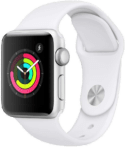 | Apple Watch Series 3 $169-$179 | Amazon | |
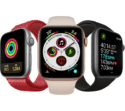 | Apple Watch Series 4 $399/$499 (cellular) | Amazon | |
| Apple Watch Series 5 $399/$499 (cellular) | Amazon | ||
 | Fitbit Ionic $229 | Amazon | |
 | Garmin Fenix 6 Series $549-$1,149 | Amazon | Competitive Cyclist |
 | Garmin Forerunner 245 $299/$349 | Amazon | Competitive Cyclist |
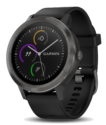 | Garmin Vivoactive 3 $129 | Amazon | |
 | Garmin Vivoactive 3 Music $169 | Amazon | |
 | Garmin Vivoactive 4 $299 | Amazon | Competitive Cyclist |
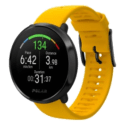 | Polar Ignite GPS $229 | Amazon |
Triathlon-Specific Watches:
This category is for what the industry calls ‘multisport’ watches, but that typically just translates to triathlon watches. They track your time/distance/etc… within the three sports – swim/bike/run. From a non-triathlon multisport aspect, these watches are often used by everyone from windsurfers to skaters, mostly because of their versatility and flexibility in configuration and display customization.
Note that the minimum requirement to be a multisport watch is specifically a multisport mode, which allows you to record multiple sports (e.g. swim/bike/run) in a single activity/file. If you have to stop the workout to change modes (like on a Fitbit), that’s not a multisport watch. That’s just a watch that happens to have multiple sports (at least by commonly accepted industry definitions).
Overall Best in Class: Garmin Forerunner 945
I know, I know, you think the Fenix 6 should be here. But I don’t. Mainly because a heck of a lot of triathletes want something that has a quick-release kit, so they can move it to their handlebars. But if that doesn’t bother you, then go forth – you can absolutely scratch out ‘Forerunner 945’ and replace it with Fenix 6 above. They’ve got virtually identical everything, from software to internal hardware (with Fenix 6 having a handful more features).
Still, as for the FR945 – both myself and y’all seem pretty darn happy with it since it came out this past spring. By now everyone’s had a full triathlon season on it, and nobody is screaming yet. It’s got more metrics than you’ll frankly ever need, but I have found the Training Load Focus/Balance bits useful for remembering when to mix up the intensities a bit. And if I want to do offline music, I can do that too – it can connect to Bluetooth Smart headphones and cache my Spotify playlists.
Best Budget Option: Polar Vantage M
This little unit got upgraded to best budget option. It probably helps that it’s currently on sale for nearly 40% off, but even at normal prices, I think it’s the best budget option today.
| Product | Amazon | Competitive Cyclist | |
|---|---|---|---|
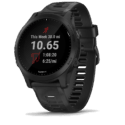 | Garmin Forerunner 945 $599/599EUR | Amazon | Competitive Cyclist |
 | Polar Vantage M $279 | Amazon |
Note: For triathlon I do NOT recommend the Garmin Vivoactive series or Garmin Instinct:
I want to be really clear on this. The reason I don’t recommend these watches is twofold, but mainly centers on the fact that they don’t support a multisport mode. Yes, it supports running, and cycling, and indoor swimming. But you can’t tie all those together in a race or training. Further, while the Garmin Instinct does support openwater swimming, it doesn’t support multisport mode.
This is pretty similar for some of the other running watches like the Polar M400/M430/M600 or Garmin FR45/230/235/245/620/630/645. Yes, they all support running and cycling, but none support multisport modes (nor openwater swimming). If you cycle sparingly and don’t swim, then they’re all still viable options.
Also, why not: Before folks ask, why not Suunto 5 (or COROS)? Honestly – I think Suunto has lost the plot here with their app/platform ecosystem. At a time when Polar keeps pushing ahead on not just their features via firmware, but also their platform behind it all – Suunto keeps removing things. Which is too bad. Last year they owned the budget category here. As for the COROS units, they’re just priced weird to win either of these categories. At the top end the Vertix is horribly overpriced for triathletes (or almost anyone), while at the bottom end the COROS Pace is actually priced very well (sub-$200), but lacks a lot of the features of the Polar Vantage M. However, I would say that there are scenarios where the COROS Pace would be something to consider if you’ve done your feature/price research against the Vantage M (use the tables at the end of this post), and don’t mind the gaps.
Cycling Tech:
Before we go too much further, if you’re looking for indoor trainers or power meters, then check out my two dedicated posts on that. My trainer post is pretty darn new – only a few weeks old. My power meter post is from this time last year. Though, nothing has actually changed since last year. Sometime soon I’ll re-write it merely to move chairs around the deck, but again, there’s no tangible change from a year ago. The products are the same and the prices are the same. Oh, and finally, if you’re looking at an indoor smart bike, then hit up that guide too.
In any case, we’ll start with the tech that goes on your handlebars.
All Around Cycling GPS: Garmin Edge 530 & Wahoo BOLT
If we were to play purely a features game, the Edge 530 would win this category no problem (or the Edge 830 if you want to pay $100 more). But it’s not as simple as that. For what the Wahoo BOLT lacks in features it does make up for in simplicity and ease of use. Mostly.
Starting with the Edge 530 – it got a boatload of new features upon launch this past spring. ClimbPro being one of the biggest, which automatically shows each segment of your climbs as you go through them on a course. It’s super cool for hilly/mountainous routes. Atop that, for mountain bikers there’s a massive swath of new features from trail routing to jump metrics. And of course – the biggie for the Edge 530 was that it now includes detailed routable maps for your region. That’s the core difference to the Wahoo BOLT, which while it has underlying maps – they can’t route atop them on the fly without a pre-programmed route.
Meanwhile, the Wahoo BOLT does support navigation as long as the routes are sent to it from your phone or a 3rd party service. And it supports all the sensors you’re likely to use, including Garmin’s Varia Radar these days. Atop that – one of the biggest points for the Wahoo is the phone integration is super smooth and ‘just works’. There’s no fiddling with trying to get or keep the pairing, nor is it complicated to find features. Sure, it has less features (a lot less), but, it’s also just simpler for many folks to pick up and go.
Either way – you won’t go wrong with either unit. You’ll largely find the Edge 530 on my handlebars these days, with the odd Edge 830 showing up here and there. The main difference between the two being the touchscreen (which, as yesterday can once again attest do – works perfectly fine in the pouring rain).
Best Mapping GPS: Edge 1030
When it comes to depth of mapping features, there’s really no competition here – the Edge 1030 wins every time. SIGMA was making a strong go for it last year with the ROX 12, but when Garmin decided to add all the new Edge 530/830 features to the Edge 1030 this past summer…that sorta killed the ROX 12’s chances of making the cut for this category (especially given they’re essentially the same price and because SIGMA has pulled out of the US market).
If you want to do it from your handlebars, there’s a pretty darn strong chance the Edge 1030 can do it. It’s a bit bigger than I probably need, it does things well and there’s no touchscreen issues (or clumsiness like the Edge 820 touchscreen). I don’t really know of anyone that doesn’t love their Edge 1030. Even the comments mirror that on not just my review, but all reviews. People are happy there, minus a few folks with a blue halo display issue – but support seems to take care of them pretty quickly. In any case, with the Edge 1030 getting features like Climb Pro this summer as well as everything else that came to the Edge 530/830, it’s just packed with cool cycling tech.
The main thing that really differentiates the Edge 1030 from something like the Wahoo ROAM is the onboard database of not just points of interests, but also addresses. It’s the ability to do literally everything from that unit – no phone required. Which is largely why you won’t find the ROAM on these lists. I just don’t see how it fits in overall, compared to their competitors on price. If it was cheaper – then it might find a place.
Best Budget GPS Unit: Polar M460 or Lezyne Mega-C/Mega-XL
This category hasn’t changed this year. At about $100 cheaper than the Edge 520/Bolt is the Polar M460. It’s essentially got the core features you want on a GPS bike computer, in a rather nice little size. It can sync your rides afterwards via Bluetooth Smart, and soon also send those completed rides to Strava wirelessly, and even has Strava Live Segments. Plus it even connects to a power meter, unlike its previous generation M450.
Next, we’ve got the Lezyne Mega-X at $199. Lezyne has like 38 different models between $100 and $200, I tried to explain it all here a few years ago, and then they added more. They’ve all got minor nuances. This year they tried to simplify that some with the Mega-C and Mega-XL options. And to some degree they have. These were essentially updates of last year’s units with an overlay map shown (though it’s more of an underlay map I suppose).
The strength of the Lezyne unit over the Polar is the ANT+ sensor support (in addition to Bluetooth sensor support). So if you have ANT+ sensors already, you may want to consider this. Whereas if you have just Bluetooth Smart sensors you’re more of a free agent. But the budget options are still really solid. Again, check out my detailed post on it to understand those specifics.
So what about the Edge 130? It’s really solid at $199, especially in terms of sensor connectivity and if you want Garmin Connect IQ support. But, it also feels a little bit overpriced compared to the Lezyne and Polar options. Of course, you’re paying for the Garmin ecosystem. Also, note that the Edge 130 wasn’t designed to be a replacement for the Edge 500 (which some folks seem to think it is). If you look at it like a budget GPS first, then it’s got fantastic features. But if you approach it as a smaller Edge 520/530, you’ll be disappointed.
Oh – and the Stages Dash L10 should probably get an honorable mention, especially if you’re a power meter user. The depth of power meter metrics is super deep there, and the battery life too. Plus, it’s sub-$150 (well, $104 right now). Seriously, it’s got the data features of a $300 unit. However, it lacks a lot of the other more common features in cycling GPS units like Strava Live Segments.
Best Safety Sensors: Cycliq Fly6 CE & Garmin Varia RTL-510 Radar
In some ways, it was kinda the ‘year of the radar’ for the Varia radar (RTL-510 is the current version that combines bike lights). Over the course of the last few months we saw Wahoo add support to their product lineup for it, then we saw Hammerhead add support, and then just yesterday we saw Stages add support. There’s good reason: It’s an awesome little device. I’ve yet (still!!!) to find someone who bought one that is unhappy with it.
Next, we’ve got the Cycliq cams. If you’re not familiar, this isn’t an action cam per se, but it’s the closest category I’ve got. It combines a rear light (which you’d want anyway) with a camera. Basically, this is a safety cam. And not in the sense that it’s going to save your ass, but rather, it’s like an insurance policy for later. I have it on my bikes while riding around the vast majority of the time and it’s just silly easy to use.
Now, this isn’t really a replacement for a GoPro or the like, it doesn’t have anywhere near that level of quality. Rather – it’s just so in the event something bad happens to you – you can prove it wasn’t your fault, or even better – catch the person if they left you at the scene.
Swimming Tech:
Year after year, swimming gets ignored by companies…but hey – this year is different! We got not one, but two new swimming devices. Heck – we go years without swimming devices and now we managed two of them in a single year!
Best All Around Swimming Watch: Garmin Swim 2
In a category that actually has no formal competitors, I guess it was bound to win. Like showing up on race day and being the only one in your age group. But in actuality, it really is the best swim watch out there – even taking into account all of the multisport watches that mostly do swimming just fine. The reason it’s the best is rather simple: It’s got more features, and does all of those features better. There’s a pile of new indoor features, especially around automatic rest tracking.
But I think the real star of the show is the openwater swim accuracy. Previously the Apple Watch won that category, but this year with the Swim 2, Garmin manages to wrestle that crown back. It was borderline scary how accurate it was. Check out my full review for all those side by side track comparisons.
Budget Swim Watch: Polar Vantage M or Apple Watch Series 3.
If you’re looking for both a pool and openwater swim watch on a budget and don’t need quite all the features – then check-out the Polar Vantage M. It’s a full-featured triathlon watch that also happens to do swimming pretty well.
Similarly, the Apple Watch Series 3 spits out fantastically accurate openwater swim tracks, as well as really strong indoor swimming. Sure, it doesn’t have the most full-featured swimming functionality – but if you’re mostly looking to just track laps and splits, it’ll more than do the trick.
Honorable Mention: FORM Swimming Goggles
It’s hard to categorize the FORM Swimming goggles. It’s not a watch obviously, and you can’t use it in openwater swimming. Still, if you’re primarily pool bound, it’s incredibly good at tracking your swim without ever requiring a glance at your wrist or a touch of the display. It just does it all automatically while displaying the stats in real-time on the inside of the goggle, heads-up display like. Sure, it’s a bit pricey at $199, and how well it holds up long-term remains to be seen. But the company is rolling out integration with the Polar OH1 heart rate sensor any day now, which should make for a super interesting combo.
| Product | Amazon | |
|---|---|---|
 | Garmin Swim 2 $249 | Amazon |
 | Polar Vantage M $279 | Amazon |
Sensor Connectivity:
If you’re getting any of the units listed above, you may be in the market for accessories. Obviously, some bundles include accessories, while others do not. Here’s what I recommend based on having entire buckets worth of accessories to test with.
In general, almost nothing has changed here in that I strongly favor dual ANT+/Bluetooth Smart sensors over single-channel versions (e.g. ANT+ or Bluetooth Smart only). These sensors are available in all categories now. The reason for going dual is simple: It allows you the flexibility to choose whichever device you want and know it’ll work with it. Be it using it with apps like Zwift or Strava on Bluetooth Smart, or your bike computers or watches that just do ANT+. Or both at once!
Heart Rate Sensor (Chest strap): Wahoo TICKR, Garmin HRM-DUAL, 4iiii Viiiiva
Looking for a non-optical HR strap? I almost exclusively use the Garmin HRM-DUAL and the Wahoo TICKR series. I personally give a slight edge to the Garmin HRM-DUAL because it’s not just dual ANT+/Bluetooth Smart, but actually dual-Bluetooth Smart. While the scenarios are somewhat limited that you’d need to concurrently connect two Bluetooth Smart devices (such as Zwift at the same time as a Polar or Suunto watch), I appreciate the flexibility. Also, I think the strap is more comfortable.
Yet at the same time, you’ll often find me rockin’ the Wahoo TICKR (often the X, but I rarely use the X-specific features). Personally, if you’re going to go for a TICKR and don’t have a specific need for the TICKR X features, then just pick up the regular TICKR and save a bunch of money.
Finally, there’s the 4iiii Viiiiva. It’s always the forgotten one, but it’s a super function-rich strap. It has a boatload of extra features around ANT+ to BLE conversion and offline storage. Plus all the regular dual ANT+/Bluetooth Smart HR bits.
Heart Rate Sensor (Optical): Polar OH1+
If I’m using a standalone optical HR sensor, it’s almost undoubtedly the Polar OH1 Plus. After adding ANT+ to it via firmware update this year, it’s quickly climbed into my gear bag. Not only does it broadcast dual ANT+/Bluetooth Smart, but a simple double-tap will record the workout to memory and then sync easily into Polar’s Flow app/platform.
While in years past I’ve recommended the dual ANT+ Scosche Rhythm/Rhythm 24, the app experience just isn’t what Polar’s is. Little things like having only a handful of hours of onboard storage for that is tough – whereas I can record boatloads of workouts to the Polar OH1+ and it happily syncs them all down the road. Plus, you get the entire Polar training analysis ecosystem along with it.
As for the just announced Mio Pod, in my testing at this point I’m seeing good accuracy results. And the app shows promise – but has some gaps that’ll keep it off this list for now. But I could easily see a case where early next year it mind find a spot after some app updates.
Cadence-Only: Wahoo RPMv2 or Garmin Cadence V2
I’ll use either unit, when I use one at all. Both transmit dual ANT+/Bluetooth Smart cadence signals, however the Garmin also transmits a second pairable cadence signal. For cyclists using a watch that’s Bluetooth Smart only (like Polar or Suunto), this would allow you to concurrently pair it to your watch for tracking your workout there, as well as pairing it to your smart trainer app like Zwift.
Note that technically I find the Garmin ANT+ cadence-only attachment system slightly better than Wahoo’s, as it doesn’t require zip ties and instead uses an industrial-strength rubber band. But that’s probably not a big deal for most people.
Speed-Only: Wahoo SPEED or Garmin Speed V2
While I rarely use a speed sensor on my regular road bike, I do use one on my commuter and cargo bikes – simply to track mileage. The Garmin V2 sensor will act like a normal dual ANT+/Bluetooth Smart speed sensor, but it’ll also quietly download a copy of every ride to your Garmin Connect account (and then onwards to connected apps like Strava).
If you don’t care about that, then realistically it won’t matter which sensor you use. Like the cadence sensor, the Garmin does have dual-Bluetooth Smart as well as being dual ANT+/BLE, but for an outdoor unit that’s frankly less important. Again – either the Wahoo or Garmin one will work just fine – both are dual ANT+/Bluetooth Smart.
Speed/Cadence (Combo): Wahoo Blue SC
If for some reason you really want a magnet-based sensor, then the Wahoo Blue SC is what you want. It includes dual ANT+ & Bluetooth Smart. Bontrager also has a dual option out these days too, but I haven’t tried it yet. Most of these are made in the same factory and just rebranded.
| Product | Amazon | Competitive Cyclist | Note | |
|---|---|---|---|---|
 | 4iiii Viiiiva ANT+ to Bluetooth Smart HR Strap & Bridge $79.00 | Amazon | ||
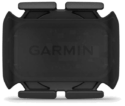 | Garmin Cadence Sensor Gen2 (Dual ANT+/Bluetooth) | Amazon | Competitive Cyclist | This magnetless Garmin Cadence Sensor attached to your crank arm and transmits cadence over both ANT+ & Bluetooth Smart to apps, watches, or bike computers. |
 | Garmin HRM-DUAL $69 | Amazon | The HRM-DUAL strap transmits not only concurrently on ANT+ & Bluetooth Smart, but actually has two Bluetooth channels, making it perfect for pairing to Zwift at the same time you also have it paired to another device/app via Bluetooth. | |
 | Garmin Speed Sensor Gen2 (Dual ANT+/Bluetooth) | Amazon | Competitive Cyclist | This magnetless Garmin speed sensor transmits your speed on ANT+ & Bluetooth Smart, but more notably, it also has memory so it can save rides even when not paired to a bike computer/watch, then quietly offloads them to your phone later on. Perfect for a commuter bike. |
 | Polar OH1 Plus $79 | Amazon | I'd argue the Polar OH1 Plus is the best optical HR sensor out there. So while it might seem odd to get this when your watch also has a optical HR sensor, this one is just better most of the time. Plus, it also has workout recording storage. Dual ANT+/Bluetooth. | |
 | Wahoo Blue SCv2 - Bluetooth Smart/ANT+ Speed/Cadence Sensor $59 | Amazon | ||
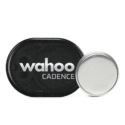 | Wahoo RPM (Bluetooth Smart/ANT+ Cadence Sensor) $34 | Amazon | Competitive Cyclist | |
 | Wahoo RPM+SPEED Bundle (Dual ANT+/BLE) $69 | Amazon | Competitive Cyclist | |
 | Wahoo SPEED ANT+/BLE Sensor $39 | Amazon | Competitive Cyclist | |
 | Wahoo TICKR (Original) $49 | Amazon | ||
 | Wahoo TICKR X (Original) $79 | Amazon |
Action Cams & Drones:
For the most part, the action cam industry is consolidating. But this year we did see DJI get into the mix with a very solid first attempt at things with the DJI OSMO Action. Super strong first attempt. Meanwhile, we haven’t really seen Garmin touch their wares in a few years – so I’ve gotta believe they’re stepping away from it at this point. There are of course a bunch of random budget cams out there on Amazon. Generally speaking, you get what you pay for there.
Best All Around Action Cam: GoPro Hero 8 Black or Hero 7 Black
Both of these units are fantastic. The Hero 8 is better quality-wise (image and audio), though, is more annoying mechanically with the side door and removal of the HDMI port. The side door makes charging on the go more difficult unless you have the still unreleased accessory “Mods”. Still, if you find me out and about, you’ll find me with a Hero 8 in a pocket somewhere. Not only is the stabilization better, but so are some of the nuanced features around settings and configuration.
The stabilization on the Hero 7 introduced last year was great, but the Hero 8 really kicks it up a notch – especially for mountain biking or anything with crazy amounts of bumps or vibrations. If you don’t do that sort of activity on the regular, then save a bit of cash and pick up the Hero 7. You won’t go wrong either way.
As for the DJI OSMO Action? Yes, it’s good. Especially the dual-screens (I *LOVE* the dual screens). But the OSMO Action smartphone app really lets it down. While GoPro was hardly the poster child for app development, things have really gotten better over the last year or so. The apps work cleanly, they do what you expect, and the entire ecosystem just works. My GoPro quietly uploads all of its footage to the GoPro Plus cloud each night when I plug it in, just for backup. DJI lacks any of that today.
Best All Around Drone: DJI Mavic Air
Nope. Not the Mavic Mini. It’s sitting right here on my desk. And it’s an awesome little drone that pushed the envelope of what’s possible in a 249g package. But in pursuit of that, they cut out too many functional features – like obstacle avoidance to minimize crashes. Or Active Track to actually follow you. Or 4K, because 4K is apparently…heavy? Or that you *have* to take the remote with you, you can’t just use your phone.
Thus, my favorite is still the DJI Mavic Air. It’s a rock star with a reasonable price. It’s got 4K video and can do some basic (very basic) tracking of you in a sport setting. While it doesn’t have as good of Active Track as the newer DJI Mavic 2 (which is much better in that department), I find that the Mavic 2’s limitations for Active Track still make it less ideal for most people (you can’t use a phone to track like you can with the Mavic Air, you have to use the dedicated controller+phone concurrently).
Video and photo quality on the DJI Mavic Air are fantastic, as is the ability to operate in high wind conditions (as I showed in some of my videos). Plus, you’ll find it on sale this holiday season as well. Seems like a no-brainer.
Note that the DJI Spark however is a freakin’ fantastic all arounder as well, and usually under $400. It lacks 4K support, but for most social media type applications you won’t notice. It’s buttery smooth and remains awesome. You’ll actually find me taking it just as often as the Mavic Air. Basically, if I’m taking photos only, I’ll take the DJI Spark, whereas if I’m taking video, I tend to take the Mavic Air.
Best Solo Shooting Sports Action Drone: Skydio R2
When it comes to sports tracking though, there’s no competition. The Skydio R1 came out about two years ago and was incredible for sports tracking with its 13 cameras onboard that was virtually impossible to crash, but the price tag was $1,999 – far too high for most people. Not to mention the size was roughly that of a pizza box, and it didn’t fold up either. Still, it was hard to set aside just how incredible the autonomous tracking was.
Well, Skydio solved that with the R2. They halved the price to $999, increased every spec they could on it, and shrunk the size to roughly that of an iPad’s dimensions (except thickness, it’s thicker of course). It starts shipping next week – so look out for my full review then.
| Product | Amazon | |
|---|---|---|
 | DJI Mavic Air $799 | Amazon |
 | GoPro Hero 7 Black $329 | Amazon |
 | GoPro Hero 8 Black $399 | Amazon |
Don’t Forget the Product Comparison Tool:
Ok, lots of recommendations. If there’s a category I’ve missed (entirely plausible) – just drop a note in the comments and I’ll try and come up with a recommendation and add it above.
More importantly though, you can mix and match just about everything I’ve talked about above, with in-depth comparison tables over at the product comparison calculator, which today supports: Action Cameras, Drones, Heart Rate Straps, Watches/Bike Computers, Power Meters, Activity Monitors, and Trainers.
Select product use/budget for a comparison from the drop down menus:
Note: While many running watches have a basic bike mode, only running units that are multi-sport focused are also included in the bike-only results (in addition to bike-specific units). Hiking units are those that include a Barometric Altimeter, Magnetic Compass and navigational functions.
Or select products for comparison by clicking the product boxes below:
—
As always, thanks for reading – and supporting the site!

